
support@yorubalibrary.com
+2348073529208, 07038599574

Yoruba traditional music is deeply rooted in the culture and history of the Yoruba people. The music is known for its intricate rhythms and diverse instruments, each with its own significance and role. This article explores various Yoruba traditional music instruments, highlighting their importance and usage.
The Talking Drum (Dundun)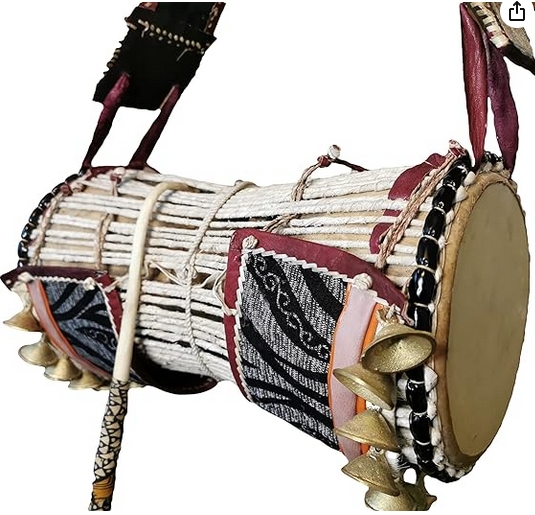
The talking drum, known as "Dundun," is one of the most iconic Yoruba musical instruments. It is named for its ability to mimic the tones and inflections of human speech, allowing drummers to communicate messages through rhythm.
• Construction and Play: The Dundun is an hourglass-shaped drum with a leather membrane on each end. It is played with a curved stick and can be tuned by squeezing the cords that run along its sides. This tuning ability enables the drum to produce different pitches.
• Cultural Significance: The talking drum is used in various ceremonies, from religious events to social gatherings. It often accompanies praise singing and is essential in conveying oral traditions.
The Bata Drum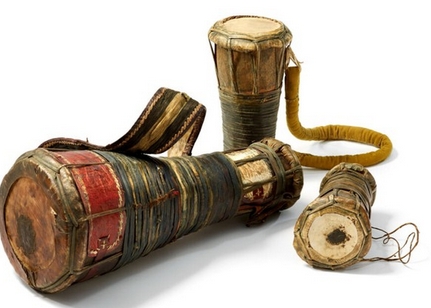
The Bata drum is another significant percussion instrument in Yoruba music, closely associated with religious and ceremonial contexts, particularly in the worship of the deity Sango, the god of thunder.
• Construction and Play: Bata drums are a set of three or more drums of different sizes, each producing distinct sounds. They are played with hands or sticks, depending on the specific type of Bata drum.
• Ritual Use: The rhythmic patterns of Bata drums are complex and are used to invoke the presence of deities, communicate with spirits, and enhance the spiritual atmosphere during rituals.
The Shekere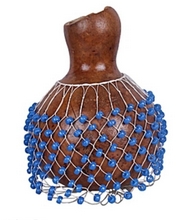
The Shekere is a percussion instrument made from a dried gourd covered with a net of beads. It produces a distinctive rattling sound when shaken or struck.
• Construction and Play: The Shekere is crafted by drying a gourd and then stringing beads or shells around it. The sound can be varied by adjusting the tightness of the beads and the force with which it is played.
• Versatility: This instrument is used in a variety of musical settings, from traditional ceremonies to modern music performances, adding a rich, rhythmic texture to the sound.
The Agogo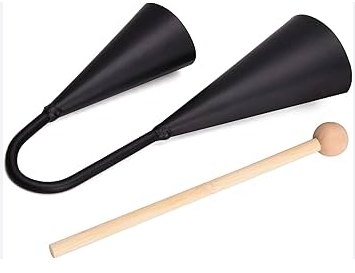
The Agogo is a type of bell used in Yoruba music, known for its bright, metallic sound. It is commonly used in ensembles to provide rhythmic support.
• Construction and Play: The Agogo consists of one or more conical bells made from iron or brass. It is played by striking the bells with a wooden stick.
• Role in Music: In traditional ensembles, the Agogo often serves as a timekeeper, helping to maintain the tempo and rhythm of the performance.
The Sakara Drum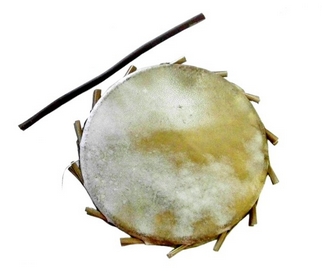
The Sakara drum is a frame drum used in Yoruba music, particularly in Sakara music, a genre associated with Yoruba Muslims.
• Construction and Play: The Sakara is made from a circular wooden frame with a stretched animal skin membrane. It is played with the hands or a stick.
• Cultural Significance: This drum is commonly used in social and religious gatherings, providing a steady rhythm that underpins the melodic elements of the music.
The Gangan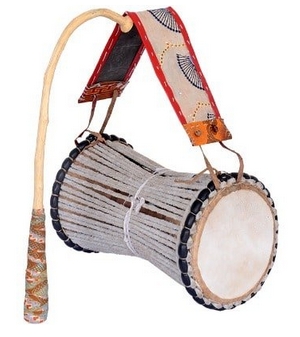
The Gangan, also known as the "talking drum," is similar to the Dundun but smaller in size. It plays a crucial role in Yoruba music, especially in praise singing and storytelling.
• Construction and Play: The Gangan is an hourglass-shaped drum with a leather membrane at each end, played with a curved stick. It can produce a range of tones by adjusting the tension of the cords along its sides.
• Usage: The Gangan is often used to convey messages, imitate speech, and enhance the narrative aspect of performances.
Conclusion
Yoruba traditional music instruments are integral to the cultural and social life of the Yoruba people. From the communicative power of the talking drum to the rhythmic complexity of the Bata drums, each instrument contributes to the rich musical heritage of the Yoruba. Understanding these instruments not only deepens appreciation for Yoruba music but also highlights the cultural significance embedded in every performance.
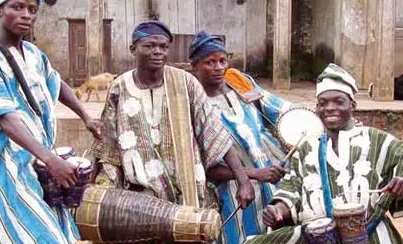
The unique styles of Yoruba Bata and Dundun dances…
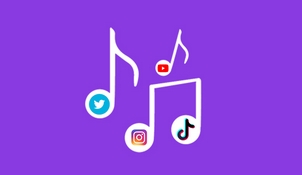
The emergence of new age social media and impact i…